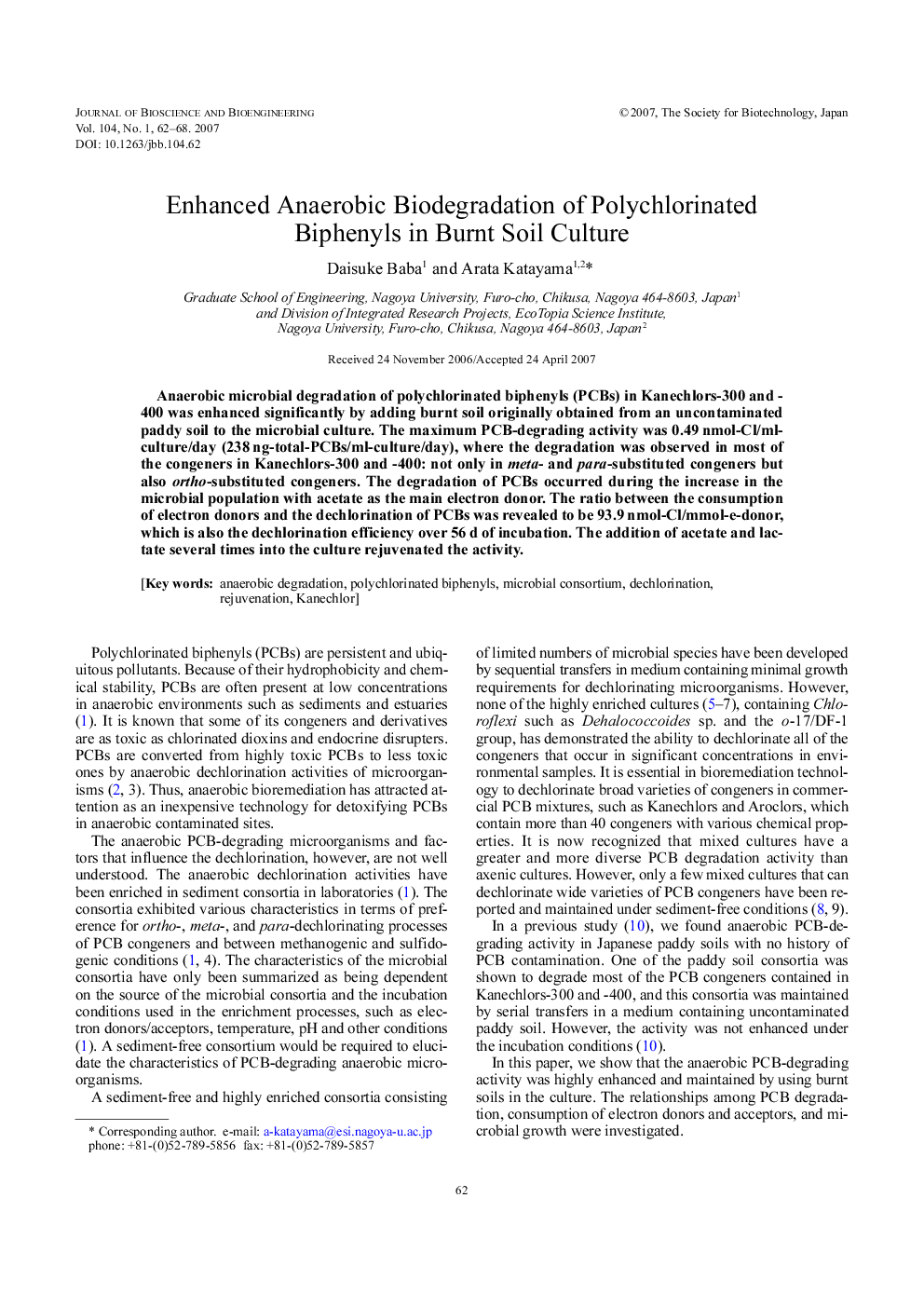| Article ID | Journal | Published Year | Pages | File Type |
|---|---|---|---|---|
| 22155 | Journal of Bioscience and Bioengineering | 2007 | 7 Pages |
Anaerobic microbial degradation of polychlorinated biphenyls (PCBs) in Kanechlors-300 and -400 was enhanced significantly by adding burnt soil originally obtained from an uncontaminated paddy soil to the microbial culture. The maximum PCB-degrading activity was 0.49 nmol-Cl/ml-culture/day (238 ng-total-PCBs/ml-culture/day), where the degradation was observed in most of the congeners in Kanechlors-300 and -400: not only in meta- and para-substituted congeners but also ortho-substituted congeners. The degradation of PCBs occurred during the increase in the microbial population with acetate as the main electron donor. The ratio between the consumption of electron donors and the dechlorination of PCBs was revealed to be 93.9 nmol-Cl/mmol-e-donor, which is also the dechlorination efficiency over 56 d of incubation. The addition of acetate and lactate several times into the culture rejuvenated the activity.
